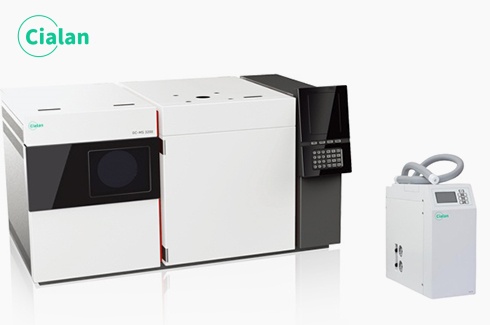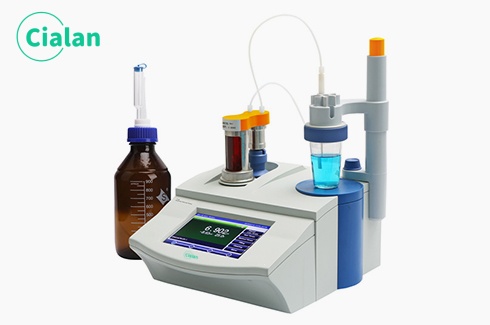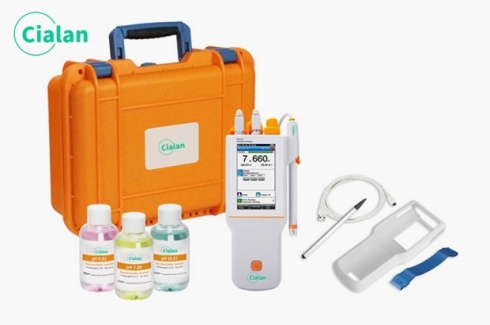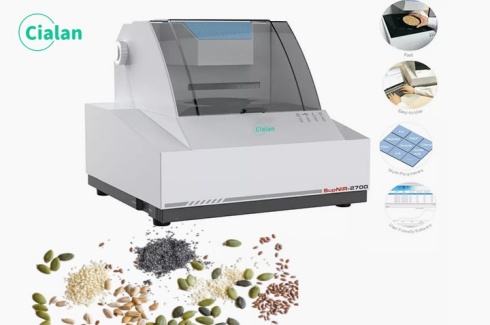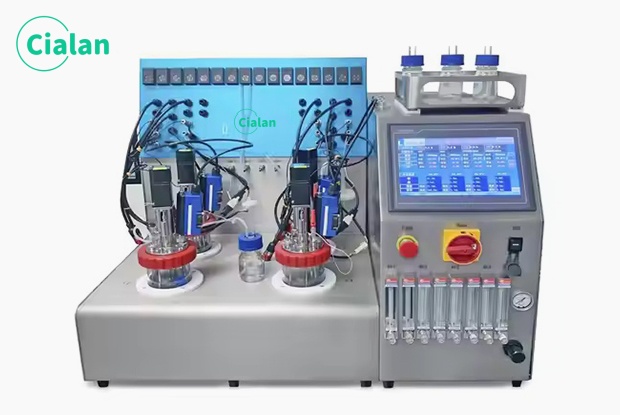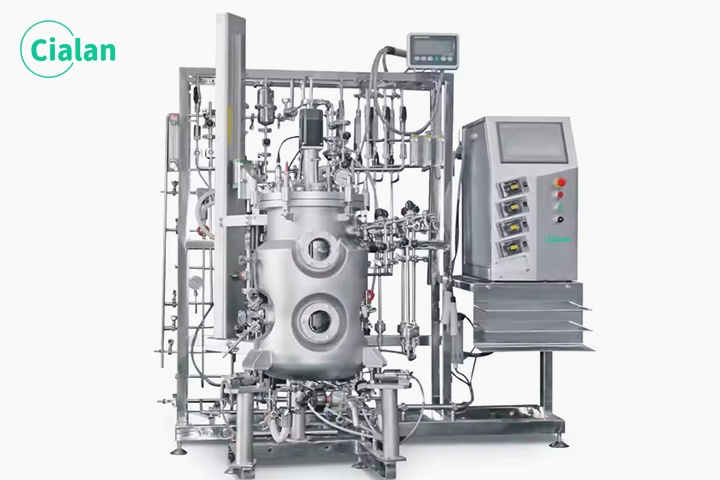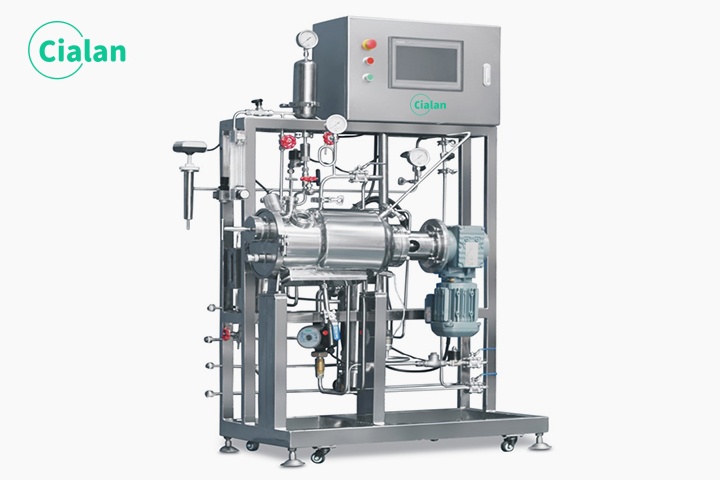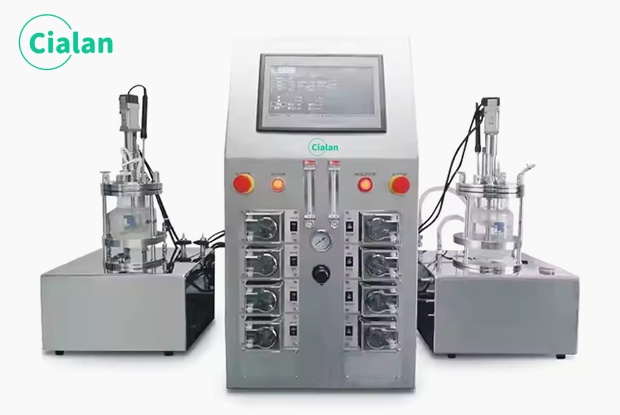The advantages for cell culture by using a bioreactor fermenter.
The advantages for cell culture by using a bioreactor fermenter.
1. Higher yields.
Improving productivity is the main reason to switch from shake flasks to bioreactors, you can often get more cells for total biomass or yield of a specific product in less time. For example, the results of wild-type, K12 E. coli culture in shake flasks and bioreactors are very different.
2. Real-time biological process information.
Since the bioreactor relies on a microcomputer to directly control various parameter information, and through each sensor plasma cell growth status, dissolved oxygen parameters, DO value, conductivity, etc. can be transmitted in real-time.
3. Higher adaptability.
The use of bioreactors increases adaptability. It's not just the number of individual parameters that can be measured and controlled. The quality and range of measurements and the ability to control them are generally more limited in shake flasks. Typically, control of key parameters such as temperature is applied to all shake flasks simultaneously. This may not be important for many screening applications, but it is a problem for optimization studies.
4. Better biological control.
This is a key factor in the value of converting from shake flasks to bioreactors. This can be control of individual parameters or complete process control using the staged strategies provided by the bioprocess software. Shake flasks enable some useful control strategies, but they are either limited in scope or require additional equipment.
5. Expand possibilities.
In anticipation of scaling up to commercial levels, small bioreactors can provide a good basis for establishing the right standards for cell culture. This is due to simple physical similarities and the quality of the available information, namely that stirred stage reactors (STRs) remain the common form of production scale bioreactors and that laboratory scale bioreactors can better mimic this, as do small bioreactors. Control strategies and optimizations for controllers can often be applied to larger scales through simple scaling changes.
.jpg)
Bioreactor fermenters are the best choice for cell culture.
1.In summary, bioreactors are sometimes considered too complex, too expensive, and too time-consuming. However, various indicators can be accurately controlled in the bioreactor, and the EKF lactic acid analyzer can even be used to analyze and detect the lactic acid produced during the cell culture process in real-time to ensure a good cell growth environment.
2.If you want to increase culture density, expand cell culture scale, process amplification, etc., using a benchtop bioreactor will be the right choice for you.

1. Higher yields.
Improving productivity is the main reason to switch from shake flasks to bioreactors, you can often get more cells for total biomass or yield of a specific product in less time. For example, the results of wild-type, K12 E. coli culture in shake flasks and bioreactors are very different.
2. Real-time biological process information.
Since the bioreactor relies on a microcomputer to directly control various parameter information, and through each sensor plasma cell growth status, dissolved oxygen parameters, DO value, conductivity, etc. can be transmitted in real-time.
3. Higher adaptability.
The use of bioreactors increases adaptability. It's not just the number of individual parameters that can be measured and controlled. The quality and range of measurements and the ability to control them are generally more limited in shake flasks. Typically, control of key parameters such as temperature is applied to all shake flasks simultaneously. This may not be important for many screening applications, but it is a problem for optimization studies.
4. Better biological control.
This is a key factor in the value of converting from shake flasks to bioreactors. This can be control of individual parameters or complete process control using the staged strategies provided by the bioprocess software. Shake flasks enable some useful control strategies, but they are either limited in scope or require additional equipment.
5. Expand possibilities.
In anticipation of scaling up to commercial levels, small bioreactors can provide a good basis for establishing the right standards for cell culture. This is due to simple physical similarities and the quality of the available information, namely that stirred stage reactors (STRs) remain the common form of production scale bioreactors and that laboratory scale bioreactors can better mimic this, as do small bioreactors. Control strategies and optimizations for controllers can often be applied to larger scales through simple scaling changes.
.jpg)
Bioreactor fermenters are the best choice for cell culture.
1.In summary, bioreactors are sometimes considered too complex, too expensive, and too time-consuming. However, various indicators can be accurately controlled in the bioreactor, and the EKF lactic acid analyzer can even be used to analyze and detect the lactic acid produced during the cell culture process in real-time to ensure a good cell growth environment.
2.If you want to increase culture density, expand cell culture scale, process amplification, etc., using a benchtop bioreactor will be the right choice for you.




